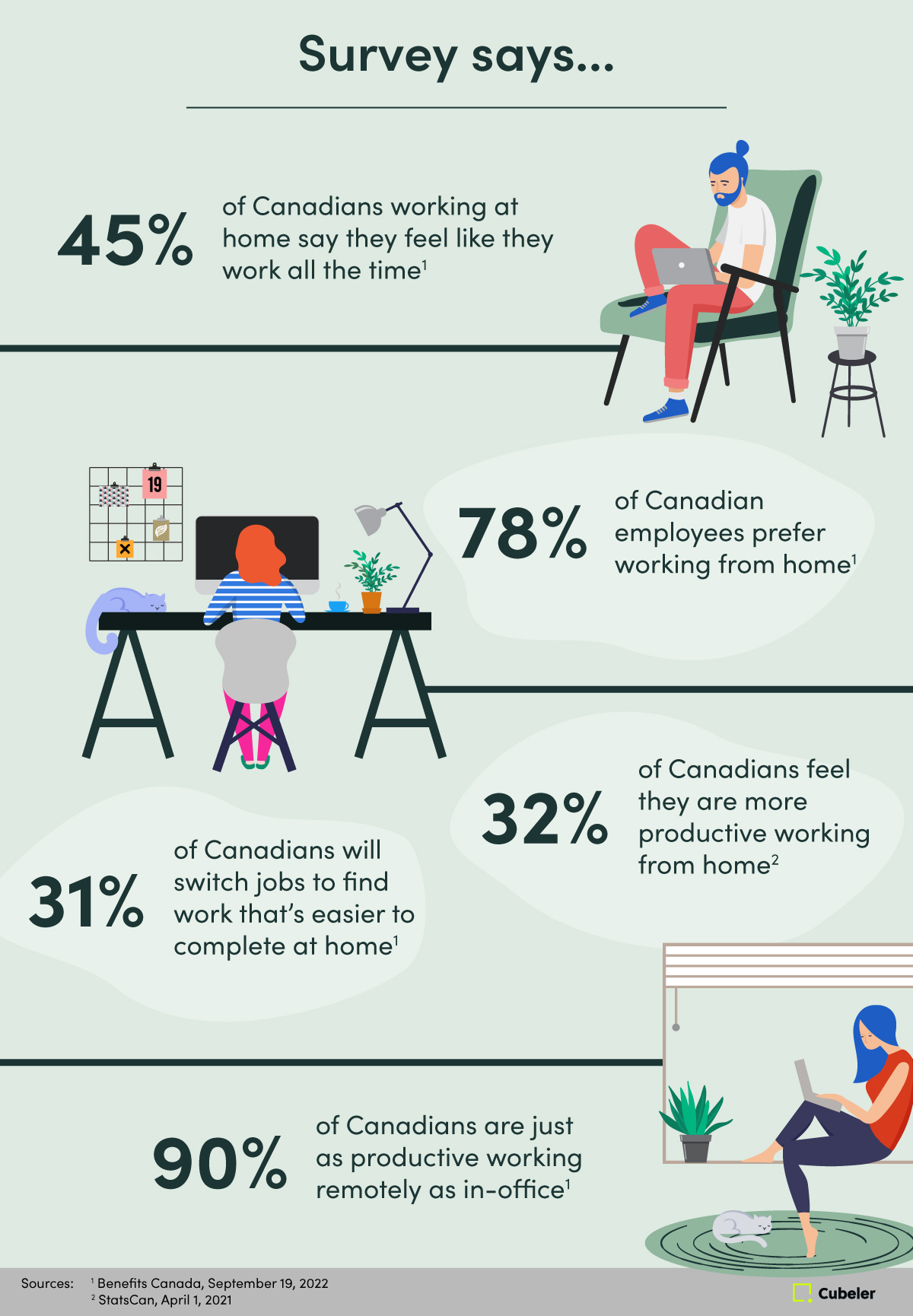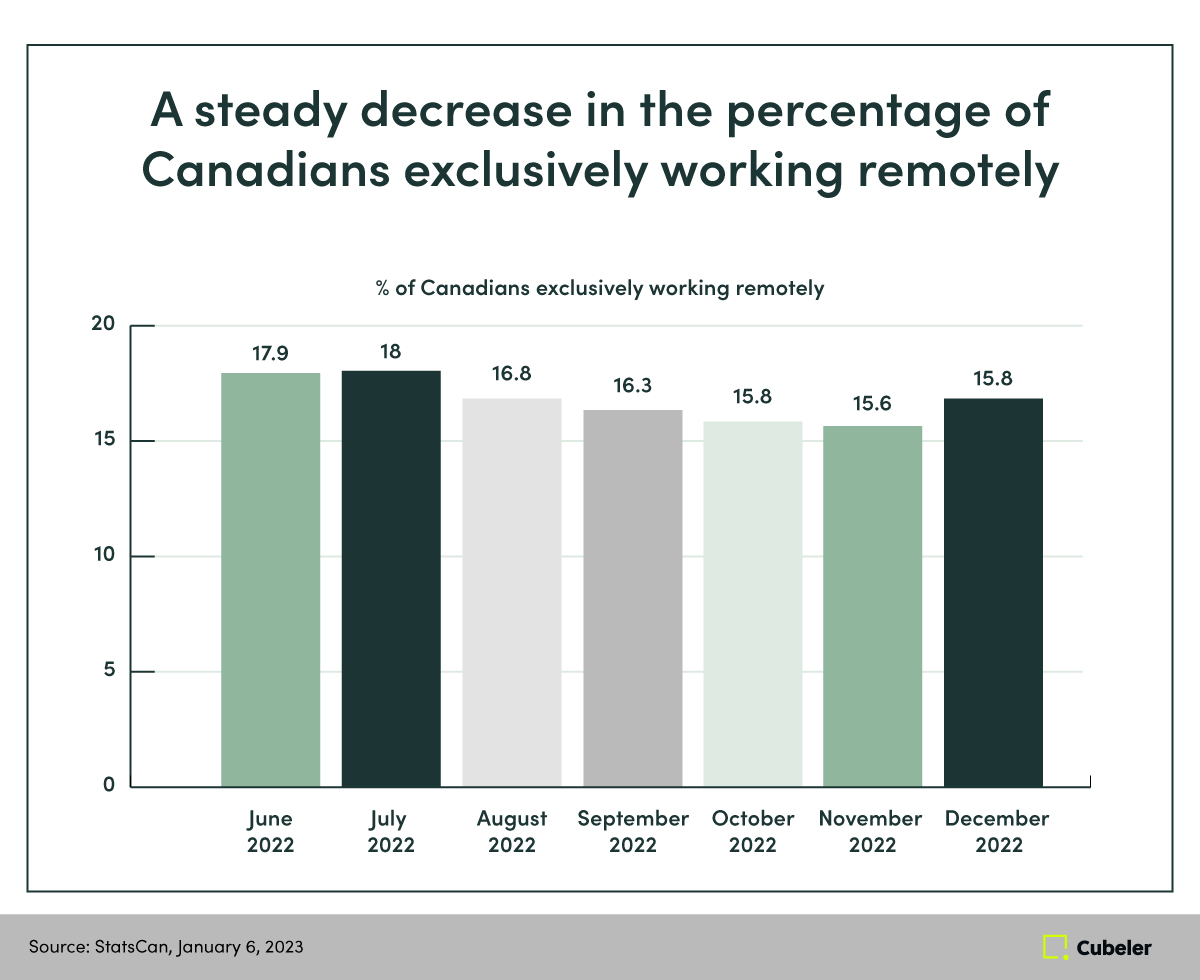Unlock the Power of Marketing: Get Your Free Marketing Plan Workbook
Enhance your marketing expertise with our free Marketing Plan Workbook, tailored specifically for small business owners...
6 min read
By:
Cubeler en-ca
28-Feb-2023 9:00:00 AM

With the ample confusion over every working model out there, deciding to go the remote, hybrid or in-office route has become increasingly difficult to navigate for SMEs. Find out how to choose the approach that best works for your business and employees.
A mere five years ago, the current face of the working world would have seemed unimaginable to most of us. Entire businesses running smoothly without an office presence? Remote workforces clicking together cohesively in dozens of languages, spread across different borders and time zones?
True, the relentless march of technology was already changing how we all worked, but when the COVID-19 pandemic engulfed our world at the beginning of 2020, the rapid transition happened so quickly, and so abruptly, that it caught many of us off-guard.
What’s more, as remote and hybrid work bleeds into more industries and sectors, new variations are beginning to emerge. Each approach has its own merits, depending on how your business is structured.
But similarly, as the market surges, new challenges have emerged. Even greater adoption of new technology, more cultural hurdles, a strong er focus on employee wellness—all have skyrocketed to the top of the SME owner’s agenda.
Remote, hybrid or in-office: What’s the difference?
For many, there’s still considerable confusion between the remote, hybrid or in-office working model. So, while the definition of each type of arrangement may seem obvious, there are some nuances between them worth exploring.
In-office approach
For some companies, the remote or hybrid working model just isn’t feasible. Employees must physically attend work for the business to operate. Fact.
However, many SMEs still maintain the same approach as before the pandemic. To be precise, people are expected in the office a pre-determined number of days per week (typically five), and the odd work-from-home (WFH) day can only be taken with advance notice.
For this reason, on those rare WFH days, employees often lack the virtual tools and technology platforms they need to work remotely, making any future transition even more unlikely.
With the in-office approach, leadership would rather encourage water cooler chats and whiteboard scribbling than invest in hybrid or remote working solutions.
Flexible hybrid approach
Under this approach, business owners and leadership have made a concerted effort to invest in tools and technology that enable employees to work remotely. Also, the business likely maintains a physical office presence, and it’s still viewed as the company’s “primary” space for work, but downsizing has likely taken place since the pandemic.
With the flexible-hybrid approach, employees are still encouraged to work in-office, especially for team socializing purposes, but leadership won’t enforce or prescribe a strict regime of in-office days. As the majority of social distancing measures were lifted post-pandemic, this approach is perhaps the most common.
Remote-friendly approach
Remote-friendly companies have doubled down on their investment in tools and technology to empower virtual working, implementing entire policies and strategies focused on better equipping employees to work happily and productively in a fully remote environment.
A physical office space may still exist under this approach, but it’s intended to supplement and support remote working. With this working model, business owners and senior leadership fully endorse remote working, setting the standard by adopting it themselves on a regular basis.
Virtual-first approach
The newest, and perhaps least common, approach is fully remote and virtual, with nearly all employees (including the owner and leadership) working from home almost exclusively. This is most seen in start-ups, or in companies that tend to hire internationally rather than locally.
With the virtual-first approach, almost every piece of technology and every workplace policy is intended to serve the distributed workforce. Company culture, workflows and business values are dedicated to supporting a virtual-first workplace. For this reason, businesses adopting this approach rarely possess a physical office presence, and if they do, it’s only frequented when tasks literally can’t be completed virtually.

Pros and cons of hybrid versus remote versus in-office
Despite the enforced adoption of remote working during the early months of the pandemic, Canada has witnessed a steady decrease in the percentage of Canadians who work remotely over the past year.

For many, a hybrid approach presents the best of both worlds, and is an effective balance between remote and in-office work. However, as with any new approach, there are opportunities and challenges in equal measure.
Hybrid Working Model: Advantages & Disadvantages
Pros
Cons
Interestingly, in contrast to the fluctuating remote work trend, the hybrid approach seems to be on an upward trajectory in Canada and could soon overtake remote working if this continues.

Transitioning to the remote or hybrid work model in 5 steps
For large companies, the transition to remote and hybrid work in the wake of the pandemic proved to be a breeze. After all, the resources, budget and people power to make this across-the-board change is usually already in place.
SMEs, however, possess tighter budgets and fewer resources to drive through such significant change. Every investment, whether people or technology-focused, must be painstakingly made to ensure they’re getting maximum bang for buck.
1. Invest in the right technology
A misguided investment for a large corporation can easily be swept under the carpet. For an SME, the consequences could be crippling. Do your research before each and every technology investment. Just because one piece of tech worked for a friend’s business, it doesn’t necessarily mean it will apply well to yours.
Before investing in a new solution or service, assess its impact on your business objectives or see if it does what it’s supposed to do. Test the water by investing in free trials, and capitalize on the rise of SaaS (software-as-a-service) to avoid getting locked into costly long-term contracts.
2. Manage expectations, early and often
Whether you’re using the remote, hybrid or in-office approach, certain management basics apply.
As an SME owner, you still need to ensure everyone knows what’s expected of them in terms of output and performance, monitoring these metrics regularly. You also must continue to set aside time for regular meetings yourself and your employees, establishing an open-door policy.
By clearly communicating your company values and goals, you make sure that everyone has bought into the working model you’ve adopted for your business, and all are pulling in the same direction.
3. Communicate, communicate, communicate
Regular communication between leadership, managers and employees is critical for making any business transformation or transition a success. A switch between working models is no different.
Poor communication is often cited as one of the main sources of workplace mistakes, making regular company-wide meetings and updates critical to helping employees feel engaged with their company, regardless of their location.
These meetings can often become mundane and trite, so make them collaborative and encourage people to share their success stories (even their failures or mistakes).
4. Don’t expect company culture to take care of itself
Establishing and maintaining a positive company culture can be more difficult when employees are spread far and wide. Much of the organic social aspect of the workday is lost—like spontaneous drinks after work, team lunch trips and welcoming new employees.
To create a company culture that works just as well remotely, it’s always a wise move to introduce virtual teambuilding activities, refine your remote onboarding process and consistently demonstrate how much you value your people and their work through public and private recognition.
5. Create a psychologically safe space
The wellness benefits of remote and hybrid work are clear, but there can also be adverse effects—including increased isolation, loneliness and burnout.
Cultivating an environment where people feel able to raise concerns and speak candidly about their mental health is vital to retaining employees and helping them remain happy and productive.
Another good idea is to invest in workplace mental health platforms that encourage employees to better understand and nurture their mental health, or offer mental health days where people can take a day off without providing a reason or an explanation.
Quick takeaways
To hybrid, or not to hybrid? That’s likely the question on every SME owner’s mind. The answer isn’t obvious. When it comes to the working model that your business should adopt, there’s no one-size-fits-all approach.
The perfect approach doesn’t exist. Each operating model comes with its own unique opportunities and challenges—and may apply to only certain business types. For example, if you have a predominantly customer-facing business, it may not make sense to adopt a fully remote (or even hybrid remote) approach.
Pay attention to what your customers are doing. If most of your customers have already adopted a remote working model, it makes sense to align accordingly—cutting physical costs in the process.
Don’t run before you can walk. Any transition needs to be carefully investigated and strategically planned. Before making any long-term commitments, painstakingly interrogate the pros and cons of each approach, and how they apply not only to the current goals and objectives of your company, but also your future business plans.
Never neglect your people. Perhaps most importantly, consider the impact any workplace transformation is likely to have on your employees. Place trust and transparency at the top of your agenda and, remember, the success and failure of any change relies on your most precious asset: your people.

Enhance your marketing expertise with our free Marketing Plan Workbook, tailored specifically for small business owners...

Find out what you need to know to bypass the most common marketing pitfalls.

Expand your SME business network the right way. Learn how to connect with like-minded SME owners and decision-makers to...